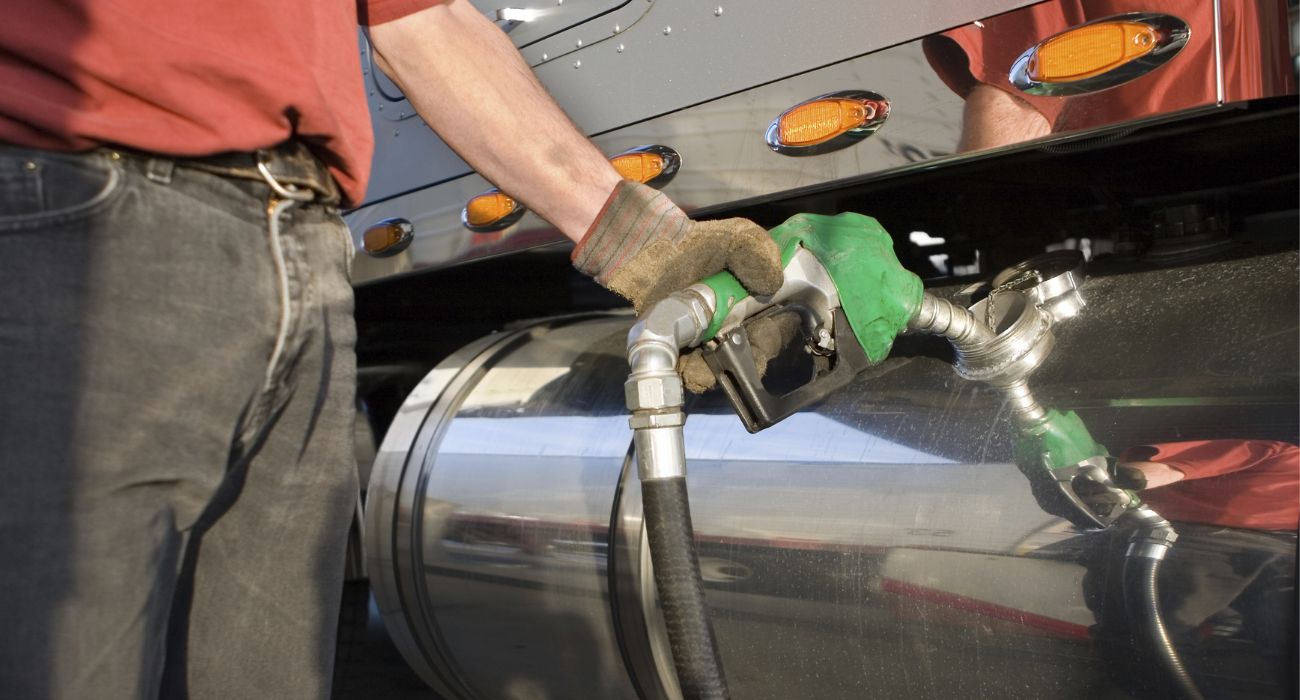The nation’s demand for diesel fuel is rising as winter looms, but the reality is that there is only a 25-day supply remaining. Diesel inventories nationwide are at the lowest seasonal level ever heading into winter, according to Bloomberg.
Some parts of the Northeast have even started rationing fuel.
“We’re very concerned about inventory levels for refined product diesel in particular, particularly across the east coast of the United States,” Brian Deese, director of the National Economic Council, said. “And we are operating right now at unacceptably low inventory levels.”
While consumers have seen some relief at the pumps when it comes to gasoline prices, diesel prices are a whole other story. In areas that are seeing the lowest supply, diesel fuel prices are running an average of 30-80 cents higher than the market average.
While Gasbuddy.com claims that gasoline prices have dropped 111.6 cents per gallon during the last year, the AAA says that diesel fuel is only down 98 cents per gallon less than one year ago. Forecasts expect retail diesel prices to average $4.86 per gallon — more than a dollar above gasoline prices for the same period – in the fourth quarter of 2022 and $4.29 per gallon in 2023.
Kent VanderLugt, a farmer in southwest Minnesota, says his fuel costs are 60% higher than a year ago, which has resulted in his cost per acre of corn increasing from $30 to $40.
Supply is also hard to find with carriers needing to visit multiple terminals, which is having a ripple effect, delaying deliveries and causing strains on local trucking capacity.
Exacerbating the problem is that trains, ships, and trucks are all propelled by diesel engines.
Diesel engines also are responsible for powering approximately 75% of U.S. farm equipment, transporting 90% of farm products, and pumping about 20% of agriculture’s irrigation water, according to Diesel Technology Forum — all of which only adds to the existing food price inflation.
According to Erin Roth, executive director of the Wisconsin-Minnesota Petroleum Council, the high cost of diesel is simply a matter of supply and demand.
“The demand for gasoline is pretty flat in this country,” Roth said. “With diesel, it’s the opposite. Most diesel engines are used for transporting some mode of goods and services.”
As reported by Reuters, there are currently global shortages of middle distillates, including diesel, gas oil, and heating oil.
On October 7, distillate fuel oil inventories in the U.S. fell to 106 million barrels, the lowest seasonal level that the government has seen since weekly data collection began in 1982.
At the end of September, distillate inventories in the European Union were just 360 million barrels, the lowest seasonal level since 2004.
Singapore’s mid-distillate inventories have dropped to 8 million barrels, the lowest seasonal level since 2007.
According to Bloomberg, distillate stockpiles began to deplete in the U.S. as refiners entered the “maintenance season” and Russia’s invasion of Ukraine tightened global supplies and limited imports.
Bringing levels upwards again is an immense challenge, especially due to market backwardation, which occurs when prices for immediate deliveries are higher than for future deliveries.
Paying a premium to build inventory contributes to a cycle of scarcity and price increases.
The issue of depleted distillate stockpiles may be felt in some parts of the U.S. more than in others. For instance, more people in New England than anywhere else in the country use fuel to heat their homes.
At the moment, around 1 million barrels of diesel meant to ship to Europe have been diverted back to the U.S., while Delta Airlines Trainer refinery located in Pennsylvania is returning from seasonal maintenance to the benefit of regional diesel production.
The diesel fuel shortage comes just weeks before the midterm elections. The shortage has the potential to raise already high prices even higher for consumers, many of whom already consider rising costs and the state of the economy to be essential factors in their voting decisions, according to Bloomberg.







Your article about diesel gave reasons for the shortage but did not include the current administration’s efforts to limit US petroleum production. Sounds a little biased reporting to me. Thank you for listening.
Guess Biden isn’t releasing any diesel from the strategic reserves. His war on oil is producing significant blow back and was not vetted and thought through. Americans pays for diesel one way or another and doesn’t help the inflation cause since just about everything we consume, food, goods, gasoline, etc are all delivered, produced, harvested etc. via a diesel engine.
Dems never think things through. Never consider the repercussions. They just think they have these grand ideas, never mind the fallout. They never have to suffer the consequences.
It’s affecting farmers and delivery vehicles. What a disgrace the present administration is. Of course, they live like kings and queens, so why should they worry. It doesn’t affect them. Ever think about the fact that if food prices soar, the taxpayers are out more money for all the food provided for the administrators? For example, the free food provided to the president and whomever, now costs us more money? Our government officials should have to go on a budget like the rest of us, including turning the thermostats to 80 in the summer.
What’s with all the lame blame Biden folks? Like he has any real control. What about “Capitalism” and the free market? No blame of it? The Capital Markets are responding to a very robust economy, invasion of Ukraine and limiting production.
We have plenty of supply and providers are making a fortune. Shell alone is on track to 25-35 Billion in profits for 2020, are stating huge deca-billion dollar stock buy backs and their production margins have tripled! According to the EIA, “the world’s oil and natural gas producer profits are set to double in 2022 from 2021, to a new high of $4 Trillion”. You would think you would have to give Biden the credit for all that if you are going to blame him for all else it as well. This is not really a supply problem. and it’s not a Biden problem It’s a production and usage imbalance created to favor private companies. And it’s always been that way.
Sorry mistyped Shell profits as 2020. It is meant to be 2022. And mistyped Starting Buy Backs…not “stating”